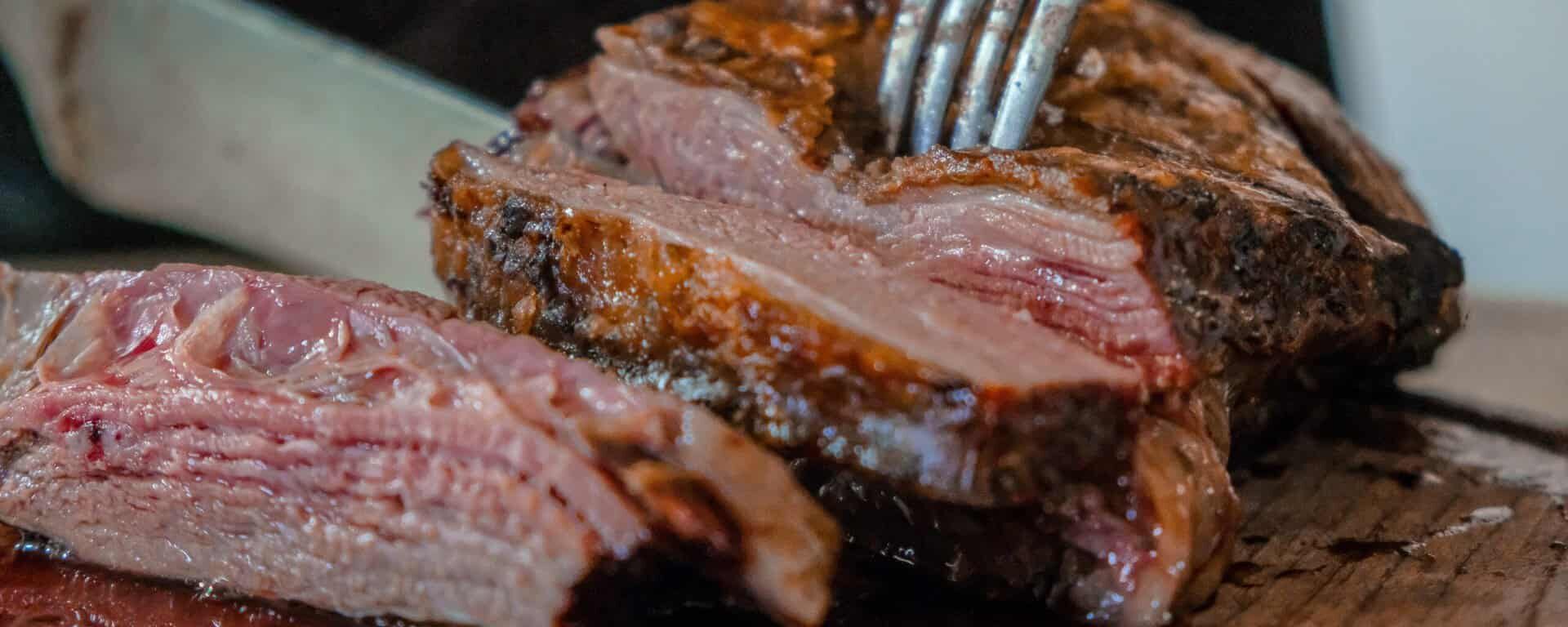
Grass fed meat is all the rage, which may have you wondering whether it’s actually healthier, or just another trend.
Fortunately, quite a bit of research is showing that while grass fed may be trending … it’s benefits far exceed simple popularity.
Here I’m breaking down why you might consider grass fed animals for your protein, as well as just how much of an impact it might make on your health.

1. Higher in Omega-3 Fats
Grass-fed beef has been shown to contain up to five times the amount of Omega-3 as grain-fed beef.
Why is this beneficial? Omega-3 fatty acids are a type of essential fat (meaning we need to get it from food) that has potent anti-inflammatory properties. Typically, Western diets are filled with a high amount of Omega-6 fatty acids; and, while these are beneficial in some aspects, they can become inflammatory and raise the risk of health issues when over-consumed.
When animals are fed their natural diets, such as grass, their bodies maintain higher levels of anti-inflammatory omega-3, which we then consume. When animals are fed too many grains from feed, their bodies can become inflamed from eating more omega-6 fatty acids, which is then passed on to us.
Because we already get adequate amounts of omega-6 fatty acids in our diets, it is beneficial to consume plenty of omega-3 fatty acids in order to have a more balanced ratio that helps fight inflammation, help maintain heart and artery health, and more.
Studies have shown that omega-3 fats can also lower blood pressure and heart rate, improve blood vessel function, and even help lower triglycerides and artery inflammation, which plays a role in the development of atherosclerosis.
2. Higher in Antioxidants like Vitamin E
Although we typically associate antioxidants with fruits and vegetables, meat and animal products do contain them. However, on average, grass fed meat contains higher amounts of antioxidants than grain-fed.
These antioxidants include vitamin A and its precursor, beta-carotene, as well as vitamin E. These antioxidants play a role in preventing damage to your DNA and cells, as well as helping with repair and cell maintenance.
Studies have shown that these higher antioxidants levels are due to the diet of grass-fed animals, which are (obviously) eating more fresh grasses than their grain-fed counterparts. And, this reveals that what animals eat can also impact our health and nutrient levels, for better or worse.
3. Higher in CLA
Conjugated linoleic acid (CLA) is a potent polyunsaturated fatty acid that has been studied for its impact on fat loss. In fact, CLA may be one of the most thoroughly-studied fat loss compounds in the world.
Many studies have shown that CLA may help inhibit fat production, decrease food intake, and even increase fat burning.
Of course, CLA isn’t a magic bullet for fat loss, but consuming it has shown evidence of helping with slaying fat. Which is yet another bonus point for consuming grass-fed meat, specifically beef and dairy: the CLA content is 300–500% higher in beef and dairy from grass-fed cows than grain-fed cows.

4. Vitamin and Mineral-Rich
While both grain-fed and grass-fed meats contain an abundance of nutrients, grass-fed meat typically contains more. It is rich in B12, B3, and B6, all of which are crucial for energy production. Plus, it’s also loaded with highly bio-available iron, selenium, zinc, and creatine, which are important for oxygenation, testosterone production, and muscular health.
Interestingly, studies show that selenium deficiency can cause muscle weakness and fatigue, which can impact your training and gains.
Creatine is also excellent for helping your muscle cells produce more energy. It does this by increasing your phosphocreatine stores, which allows you to produce more ATP energy to fuel your muscles during high-intensity workouts.
5. Better Flavor
Most of us are aware of all types of health foods and supplements, but the bonus with this one is that the flavor actually tastes better! Of curse, this is subjective, but many people who switch to grass-fed meats claim the flavor profile is richer and “cleaner”.
6. Happier, Healthier Animals
To be considered a “grass-fed” product, the animal in question must have had access to grass and a pasture during its lifetime. Grain-fed animals typically spend much of their lives confined to a stall without much room to move, and without much fresh air or sunlight.
Choosing grass-fed meat encourages the production process of raising animals that are in a healthier, happier environment in nature. Studies have also confirmed that feeding cows primarily grain throughout their lives can promote more illness and bacteria – the last thing any of us want to consume.
Another factor to consider is that many (not all: it’s still important to check the label carefully) companies and farms offering grass fed meat also keep added hormones and antibiotics out of their animals. This is extremely beneficial, since these hormones can disrupt our own hormonal system, potentially causing plenty of endocrine-related health problems.
The Bottom Line
• Grass fed meat can contains on average 5x more omega-3 fatty acids than standard, grain-fed meat
• Grass fed meat is more nutritious, containing higher levels of antioxidants like vitamin E, B vitamins, and minerals like magnesium, zinc, and copper
• Grass fed meat contains more conjugated linoleic acid than grain-fed meat, which plays a role in fat usage and storage
• Many customers state grass fed meat has a much better flavor than standard meat
